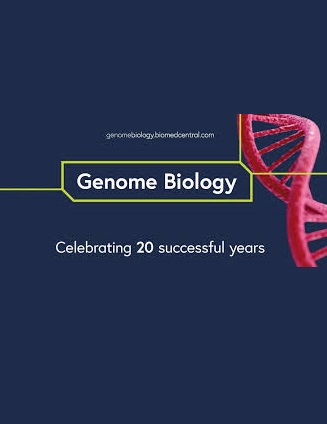Atlas of telomeric repeat diversity in Arabidopsis thaliana
IF 10.1
1区 生物学
Q1 BIOTECHNOLOGY & APPLIED MICROBIOLOGY
引用次数: 0
Abstract
Telomeric repeat arrays at the ends of chromosomes are highly dynamic in composition, but their repetitive nature and technological limitations have made it difficult to assess their true variation in genome diversity surveys. We have comprehensively characterized the sequence variation immediately adjacent to the canonical telomeric repeat arrays at the very ends of chromosomes in 74 genetically diverse Arabidopsis thaliana accessions. We first describe several types of distinct telomeric repeat units and then identify evolutionary processes such as local homogenization and higher-order repeat formation that shape diversity of chromosome ends. By comparing largely isogenic samples, we also determine repeat number variation of the degenerate and variant telomeric repeat array at both the germline and somatic levels. Finally, our analysis of haplotype structure uncovers chromosome end-specific patterns in the distribution of variant telomeric repeats, and their linkage to the more proximal non-coding region. Our findings illustrate the spectrum of telomeric repeat variation at multiple levels in A. thaliana—in germline and soma, across all chromosome ends, and across genetic groups—thereby expanding our knowledge of the evolution of chromosome ends.拟南芥端粒重复多样性图谱
染色体末端的端粒重复阵列在组成上具有高度动态性,但由于其重复性和技术限制,很难在基因组多样性调查中评估其真实变异。我们全面描述了 74 个遗传多样性拟南芥品种中紧邻染色体末端典型端粒重复阵列的序列变异。我们首先描述了几种不同类型的端粒重复单元,然后确定了形成染色体末端多样性的进化过程,如局部同质化和高阶重复的形成。通过比较基本同源的样本,我们还确定了退化和变异端粒重复序列在种系和体细胞水平上的重复数变异。最后,我们对单体型结构的分析揭示了变异端粒重复序列分布的染色体末端特异性模式,以及它们与更近端非编码区的联系。我们的研究结果表明了端粒重复变异在泰利亚蛙种系和体细胞、所有染色体末端以及不同基因组中的多层次分布,从而扩展了我们对染色体末端进化的认识。
本文章由计算机程序翻译,如有差异,请以英文原文为准。
求助全文
约1分钟内获得全文
求助全文
来源期刊

Genome Biology
Biochemistry, Genetics and Molecular Biology-Genetics
CiteScore
21.00
自引率
3.30%
发文量
241
审稿时长
2 months
期刊介绍:
Genome Biology stands as a premier platform for exceptional research across all domains of biology and biomedicine, explored through a genomic and post-genomic lens.
With an impressive impact factor of 12.3 (2022),* the journal secures its position as the 3rd-ranked research journal in the Genetics and Heredity category and the 2nd-ranked research journal in the Biotechnology and Applied Microbiology category by Thomson Reuters. Notably, Genome Biology holds the distinction of being the highest-ranked open-access journal in this category.
Our dedicated team of highly trained in-house Editors collaborates closely with our esteemed Editorial Board of international experts, ensuring the journal remains on the forefront of scientific advances and community standards. Regular engagement with researchers at conferences and institute visits underscores our commitment to staying abreast of the latest developments in the field.
 求助内容:
求助内容: 应助结果提醒方式:
应助结果提醒方式:


